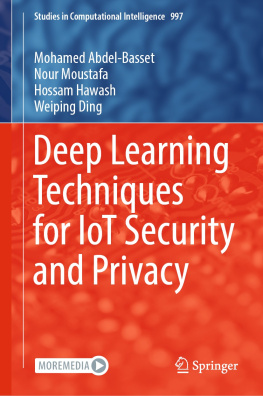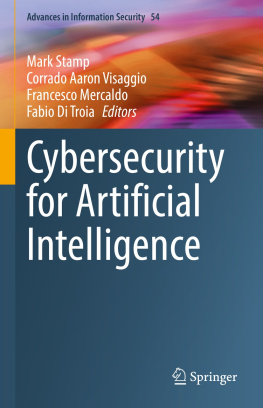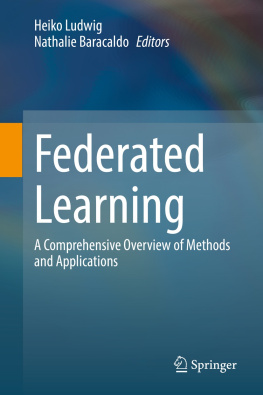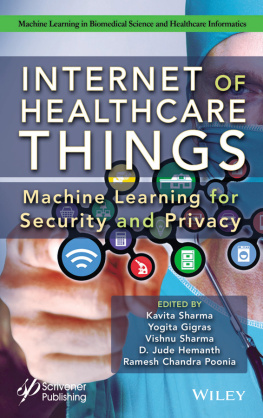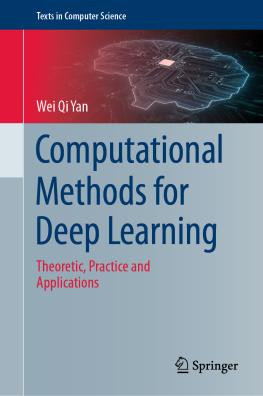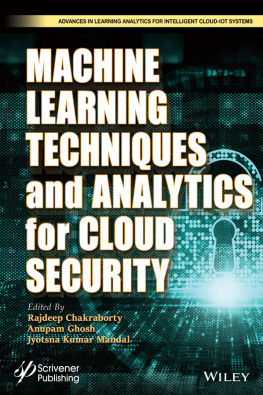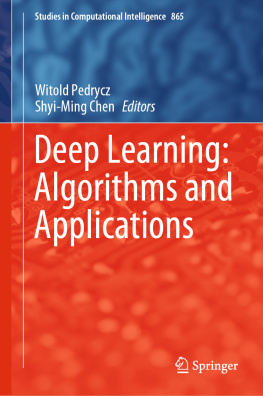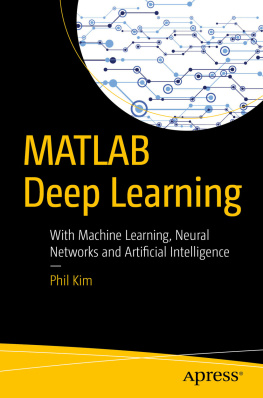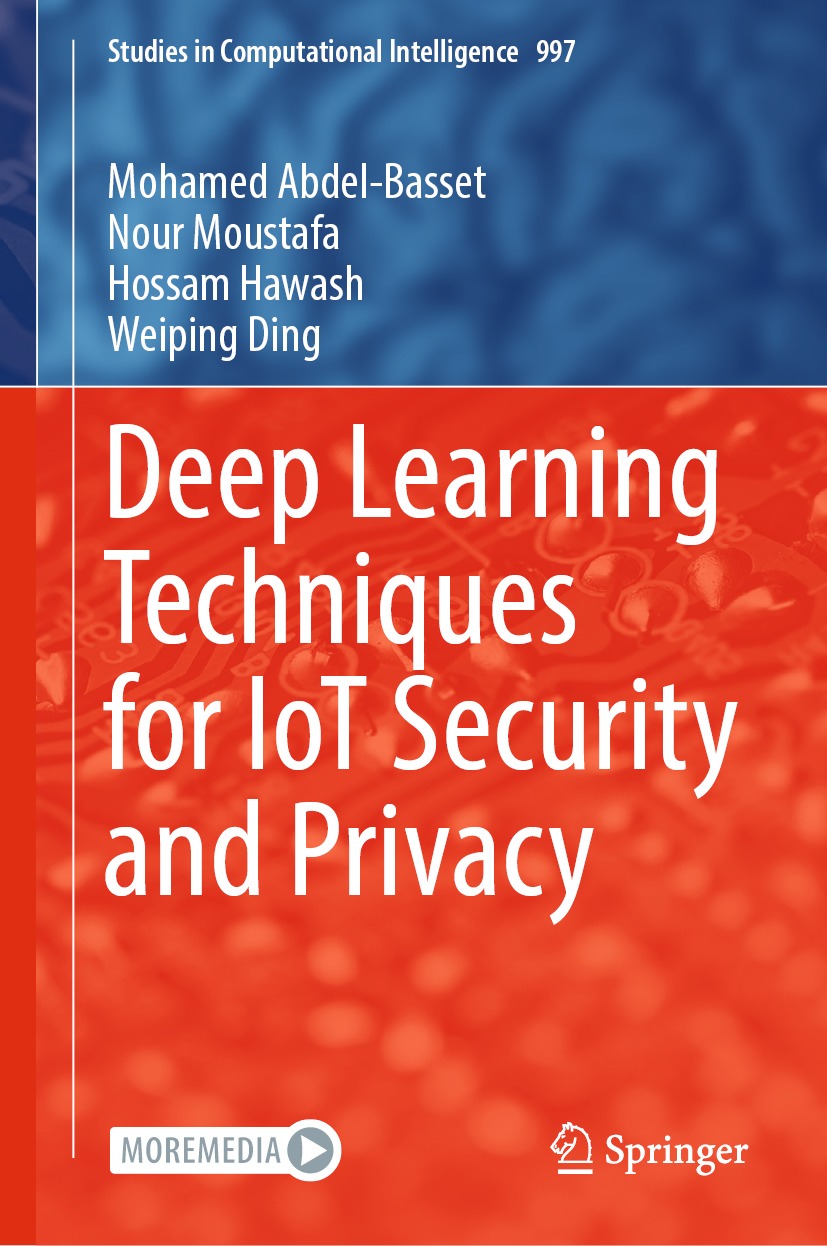Volume 997
Studies in Computational Intelligence
Series Editor
Janusz Kacprzyk
Polish Academy of Sciences, Warsaw, Poland
The series Studies in Computational Intelligence (SCI) publishes new developments and advances in the various areas of computational intelligencequickly and with a high quality. The intent is to cover the theory, applications, and design methods of computational intelligence, as embedded in the fields of engineering, computer science, physics and life sciences, as well as the methodologies behind them. The series contains monographs, lecture notes and edited volumes in computational intelligence spanning the areas of neural networks, connectionist systems, genetic algorithms, evolutionary computation, artificial intelligence, cellular automata, self-organizing systems, soft computing, fuzzy systems, and hybrid intelligent systems. Of particular value to both the contributors and the readership are the short publication timeframe and the world-wide distribution, which enable both wide and rapid dissemination of research output.
Indexed by SCOPUS, DBLP, WTI Frankfurt eG, zbMATH, SCImago.
All books published in the series are submitted for consideration in Web of Science.
More information about this series at https://link.springer.com/bookseries/7092
Mohamed Abdel-Basset , Nour Moustafa , Hossam Hawash and Weiping Ding
Deep Learning Techniques for IoT Security and Privacy

Logo of the publisher
Mohamed Abdel-Basset
Faculty of Computers and Informatics, Zagazig University, Zagazig, Egypt
Nour Moustafa
School of Engineering and Information Technology, University of New South Wales Canberra, Canberra, ACT, Australia
Hossam Hawash
Faculty of Computers and Informatics, Zagazig University, Zagazig, Egypt
Weiping Ding
School of Information Science and Technology, Nantong University, Nantong, China
ISSN 1860-949X e-ISSN 1860-9503
Studies in Computational Intelligence
ISBN 978-3-030-89024-7 e-ISBN 978-3-030-89025-4
https://doi.org/10.1007/978-3-030-89025-4
The Editor(s) (if applicable) and The Author(s), under exclusive license to Springer Nature Switzerland AG 2022
This work is subject to copyright. All rights are solely and exclusively licensed by the Publisher, whether the whole or part of the material is concerned, specifically the rights of translation, reprinting, reuse of illustrations, recitation, broadcasting, reproduction on microfilms or in any other physical way, and transmission or information storage and retrieval, electronic adaptation, computer software, or by similar or dissimilar methodology now known or hereafter developed.
The use of general descriptive names, registered names, trademarks, service marks, etc. in this publication does not imply, even in the absence of a specific statement, that such names are exempt from the relevant protective laws and regulations and therefore free for general use.
The publisher, the authors and the editors are safe to assume that the advice and information in this book are believed to be true and accurate at the date of publication. Neither the publisher nor the authors or the editors give a warranty, expressed or implied, with respect to the material contained herein or for any errors or omissions that may have been made. The publisher remains neutral with regard to jurisdictional claims in published maps and institutional affiliations.
This Springer imprint is published by the registered company Springer Nature Switzerland AG
The registered company address is: Gewerbestrasse 11, 6330 Cham, Switzerland
I dedicate this book to my readers for their curiosity to learn. My wife Ghofran, a divine presence and guidance constantly channels my creative energy to empower the world with my wisdom. My children (Aliaa and Laila) are inspiring me with their intuitive perspective, and their critique of the draft was instrumental in transforming the content for the audience.
Mohamed Abdel-Basset
This book is dedicated to my parents, my wife who gives unconditional support for all the things I aspire to both vocationally and otherwise and to our children.
Nour Moustafa
This book is dedicated to my parents, my wife who gives unconditional support for all the things I aspire to both vocationally and otherwise and to our children.
Weiping Ding
To my adorable mom, E. Amera, and to my beloved sister, S. Hawash
Hossam Hawash
Preface I
Internet of Things (IoT) is a ubiquitous technology for transforming everything we do and the infrastructure which supports us. From smart device to smart cities, companies, critical infrastructure, health care, smart grid, and wearables, which lead to vast amount of daily generated and processed data. This extraordinary scale, ubiquity, and interconnectivity also establish an environment where the confidence and integrity of these IoT applications turn out to be an overriding interest. One only has to look to the headings where attacks on vital infrastructure such as energy generation and distribution, liabilities in our automobiles, and malware in webcams, smartphones, and PCs which we bring into our homes underscore our joint vulnerability. Given the broad attack surfaces being formed and the irregularity between attackers wanting to uncover a particular weakness to take advantage of, whereas defenders should discover and close up all vulnerabilities, IoT generates an unrivaled set of security challenges. During journey of authors, we have had the pleasure of working with a lot of experts in their own fields. This well-timed book will build the readers knowledge about the IoT security challenges, the potential of deep learning to provide remedies for these challenges in the available IoT frameworks, and certain vertical applications. Please join us in the critical mission deep learning-based secure IoT applications.
Mohamed Abdel-Basset
Nour Moustafa
Hossam Hawash
Weiping Ding
Preface II
The topic of this book is deep learning for securing Internet of Things (IoT)which is a subfield of artificial intelligenceconcentrating on the general and challenging security problems in an IoT environment. Intelligence is driven only by learning the inherent representations from the observations acquired in IoT environment. This data-driven learning is incredibly general and may be applied to numerous everyday circumstances from playing games to autonomous driving of vehicles. Thanks to elasticity and generalization, the field of deep learning is evolving very rapidly and attracts lots of interest both from researchers attempting to enhance current or establish new techniques, as well as from specialists fascinated in resolving the cyber-physical security issues in the most effective mode. This book was written as an effort to fulfill the evident gap of workable and structured information about intelligent security solution in IoT environments. On one hand, there are countless research activities all around the world, new research papers are being published almost every day, and a large portion of conferences such as NIPS or ICLR is dedicated to deep learning methods for securing IoT applications. There are many huge research groups concentrating on deep learning solutions methods application in industry, robotics, health care, transportations, and others. The information about the recent research is broadly obtainable but is extremely specialized and abstract to be comprehensible without significant hard work. Even worse is the situation with the practical aspect of deep learning application, as it is not continuously apparent how to make a move from the abstract approach portrayed in the mathematical-heavy way in a research paper to a functioning application to real-world problem. This makes it challenging for somebody concerned in the area to obtain an insightful interpretation of approaches and concepts behind papers and conference talks. There are some very good blog posts about various deep learning aspects illustrated with working examples, but the incomplete presentation of a blog post tolerates the author to discuss only one or two approaches without designing a comprehensive planned picture and screening how diverse approaches are related to each other. This book is our effort to tackle this problem.

